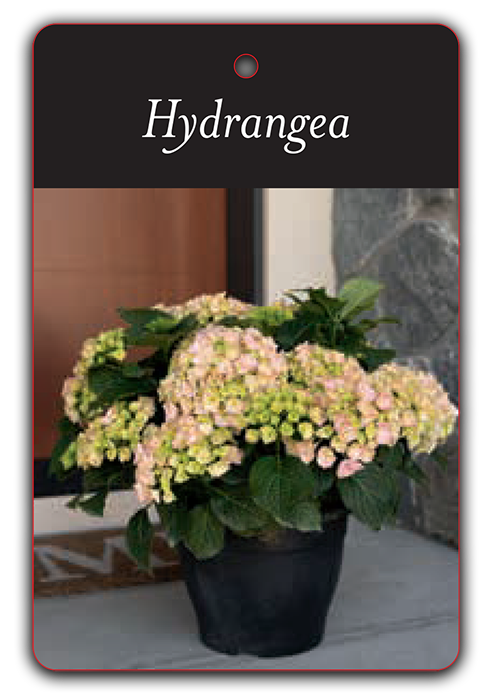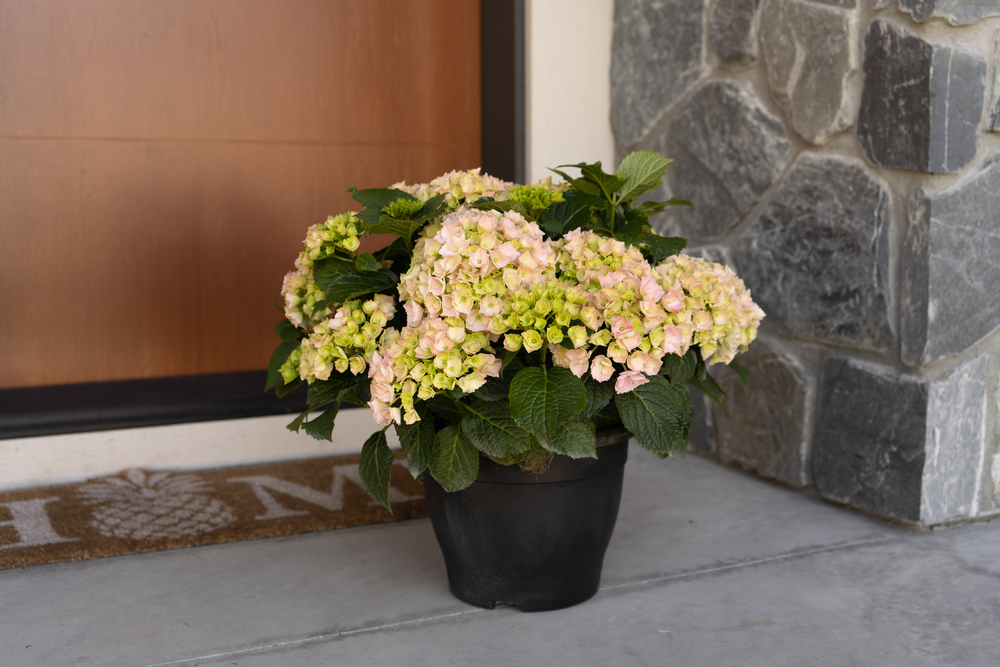
IDEAS FOR ENJOYING YOUR
HYDRANGEA SHRUB
A garden classic that evokes the feeling of basking in the summer sun. Surround yourself in the beauty of these attractive, colorful blooms by featuring in group plantings or containers. Perk up your patio or front step or present as a unique hostess gift at your next summer barbeque. Hydrangea blossoms can also be dried for everlasting home decor!
Key Characteristics of your Hydrangea Shrub
USDA Zones
Sunlight
Morning sun/Part shade.
Size
Mature Height: 35-36″ (90-92cm)
Mature Width: 35-36″ (90-92cm)
Color
Blue, pink, white, lavender, and rose-colored blossoms—sometimes all blooming on the same plant!
Bloom Time
Summer to Fall
Growth Habit
Shrub
Warning
Not for human or animal consumption
Caring for your Hydrangea Shrub
-
- A flowering Hydrangea should not be allowed to dry out as it will shorten the bloom life.
- Keep your Hydrangea’s soil moist each day while in flower.
- Water directly onto the surface of the soil and avoid sprinkling over the flowers as that will shorten flower life.
- Avoid letting the plant sit in standing water as this is harmful to the roots.
- It is beneficial to feed your Hydrangea with a regular plant feed while enjoying the blooms.
- As they age throughout the summer, the blooms will eventually transform into fall color with the cooler temperatures.
- Hydrangeas can be enjoyed into the fall, on your patio or planted. To enjoy your Hydrangea for years to come, cut the blooms from your Hydrangea mid-September and plant in a partially shaded area of your garden. Incorporate some Bone Meal in the planting soil. Be sure to allow space for the Hydrangea to grow.
- Flowers buds are set by late summer for the following year, deep inside the growing tip of the branch. Any pruning of those tips will remove next year’s flowers. Your Hydrangea will not need much pruning for the first and possibly the second year.
- If needed, you may shear down the plant to 6” from the main stem in the spring but be prepared to miss out on a year of flowers. An alternative is to select certain branches to cut back so an even amount of flowers will remain on the plant.
- A layer of mulch (2-3”) will help give the roots a little extra winter protection while also helping retain soil moisture through the summer.
- A flowering Hydrangea should not be allowed to dry out as it will shorten the bloom life.



